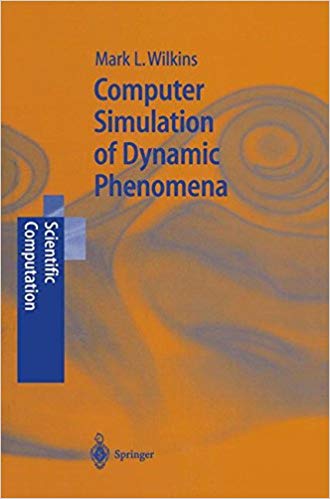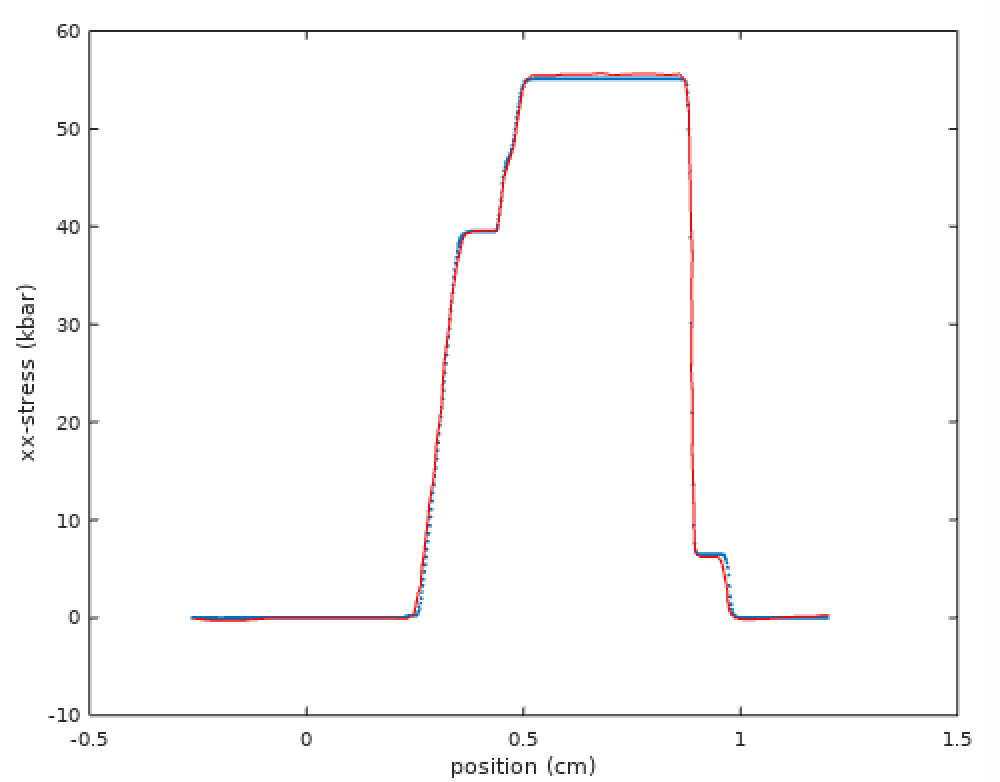KO: One-Dimensional Hydrocode (KO)
Introduction
 The following hydrocode is based on a book by Mark Wilkins entitled "Computer Simulation of Dynamic Phenomena". The code is a simple one-dimensional Lagrangian finite difference hydro-dynamic scheme, with von Mises strength. I have included several user selectable equations of state including ideal gas, Mie-Gruenisen and p-alpha. The code is written in fortran and the data can be visualized in matlab or octave, which is an open source free version of matlab. I have also made a couple of quick you-tube videos that show you how to compile, run and visualize the results.
The following hydrocode is based on a book by Mark Wilkins entitled "Computer Simulation of Dynamic Phenomena". The code is a simple one-dimensional Lagrangian finite difference hydro-dynamic scheme, with von Mises strength. I have included several user selectable equations of state including ideal gas, Mie-Gruenisen and p-alpha. The code is written in fortran and the data can be visualized in matlab or octave, which is an open source free version of matlab. I have also made a couple of quick you-tube videos that show you how to compile, run and visualize the results.
Click on the following link to download the source code (KOv13.f), input file (ko.in) and post-processing file input file (jmovie_ko.m). You might also find the appendices and the property tables from Wilkins book helpful.
KO: Quick Start
The following video shows you how to download and compile KO using gfortran. It introduces a simple example of an aluminum flyer impacting a stationary aluminum target at 700 m/s. This video also introduces the post-processing visualization within Octave, which is the open-source version of Matlab. Everything described herein will also work in Matlab. The last part of the video demonstrate how to visualize a movie generated from the Al-Al impact within octave. You can download the entire directory I use in this video from (Example-Fig3-8.zip) which also contains the discretized data from Figure 3.8 from Wilkins book.See video in YouTube
KO: Shock Hugoniot Example Problem
 |
|---|
| Output from example problem of aluminum impacting aluminum at 700 m/s |
See video in YouTube
KO: Post-processing using Octave/Matlab and jmovie_ko.m
This video presents a short tutorial on how data within ko.dat is formatted and written to file. It then presents a short tutorial on how to use the m-file jmovie_ko.m to plot data contained in ko.dat as either a movie or an xy plot.See video in YouTube
KO: Input File
This video presents more detail regarding the KO input file (ko.in) and its format. It reviews the equations of state and boundary conditions implemented in KO and how to select and implement them for a simulation. The video connects the fortran files, and sections of the code, to the stencil in Wilkins' book.See video in YouTube
KO: Explained
The following video goes into painful detail regarding how the KO hydrocode is constructed in Fortran following the derivation in Mark Wilkins book. There is some discussion of how the code is structured and hidden features, as well as how data is stored. If you have any additional questions about KO, I would be happy to discuss.See video in YouTube
Please e-mail john.borg at MU.edu with any questions you might have regarding this code.
